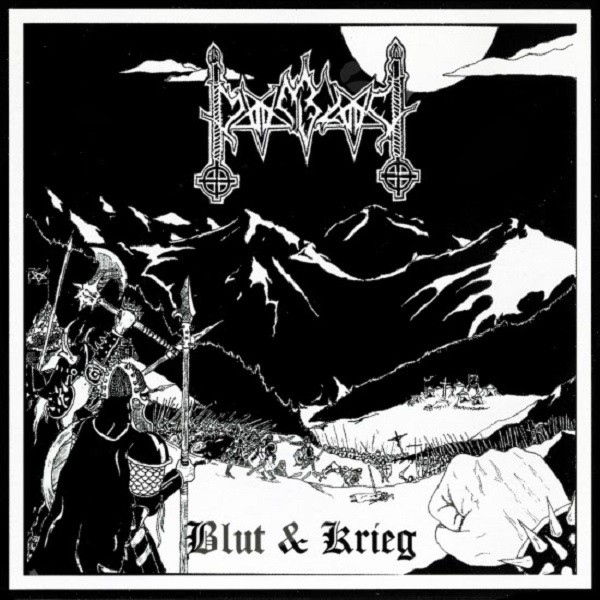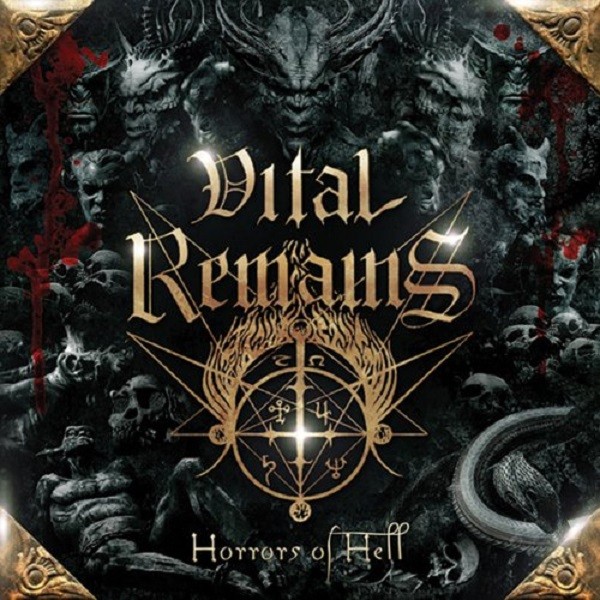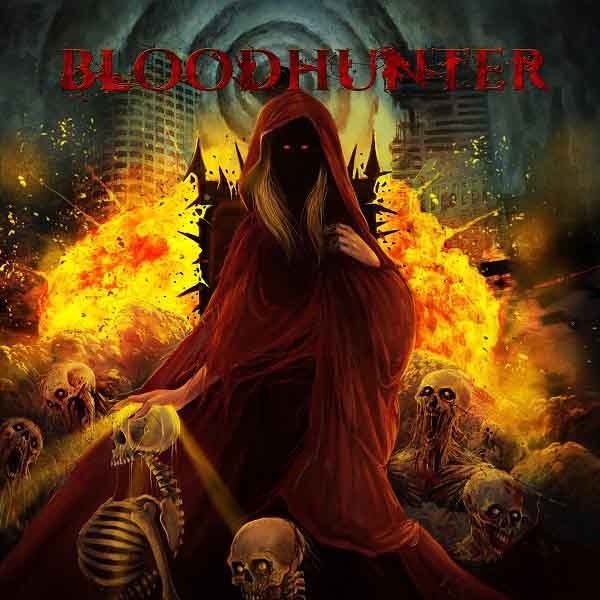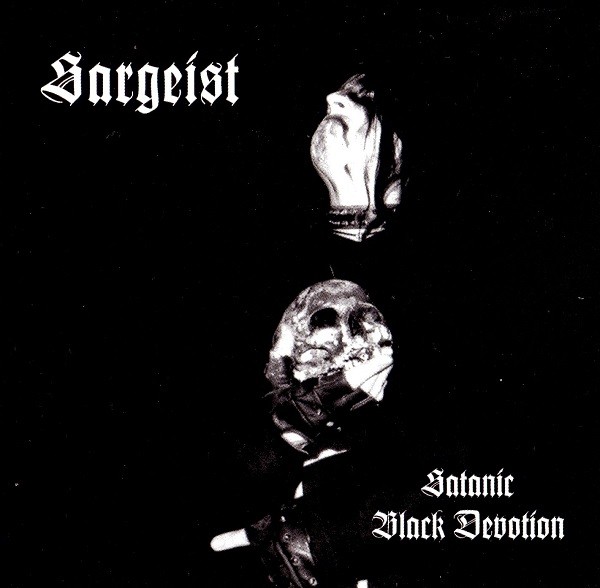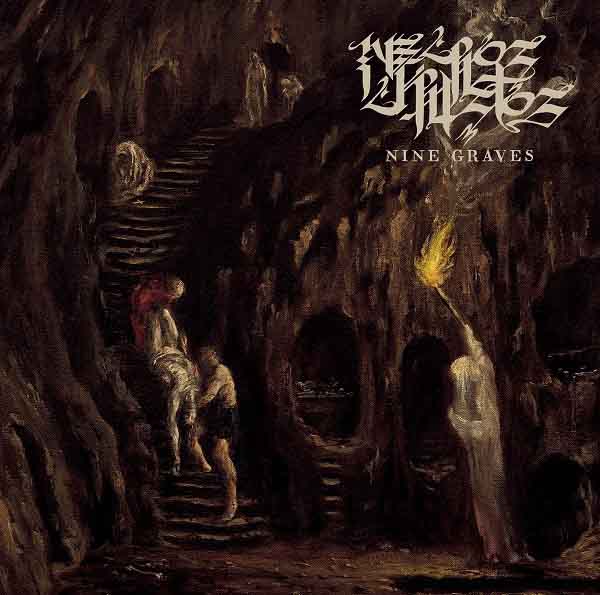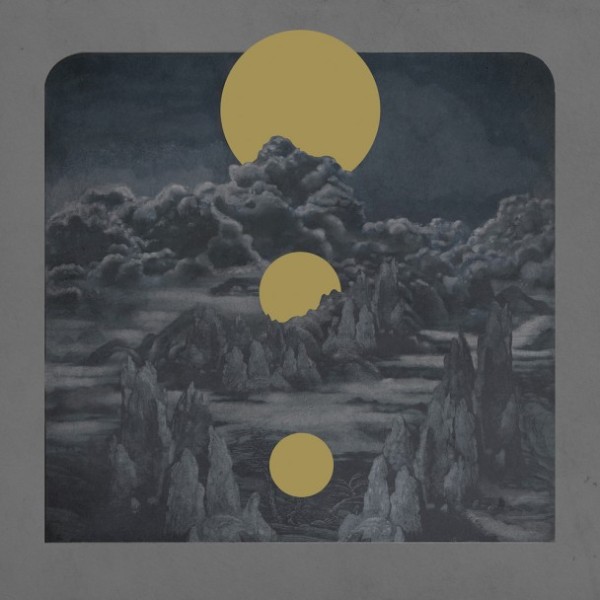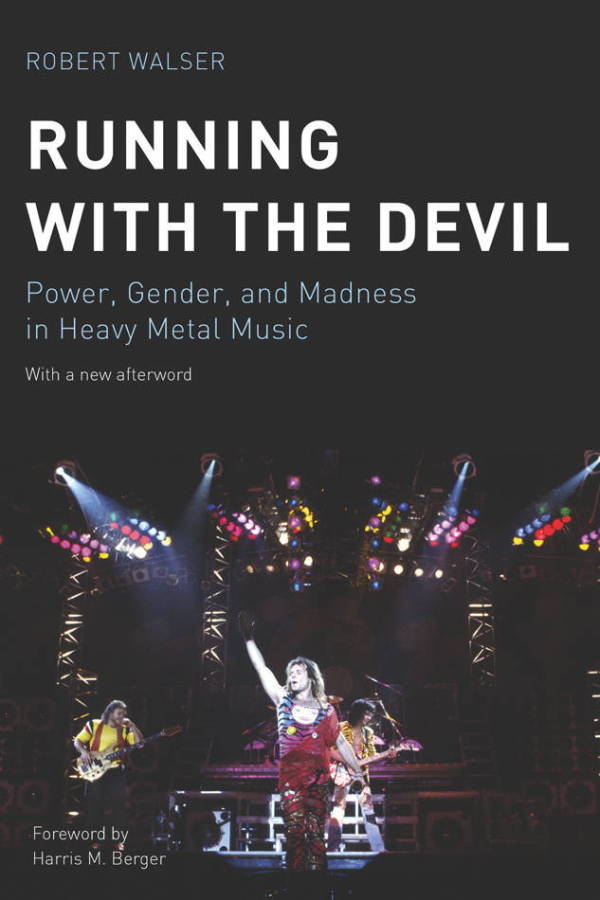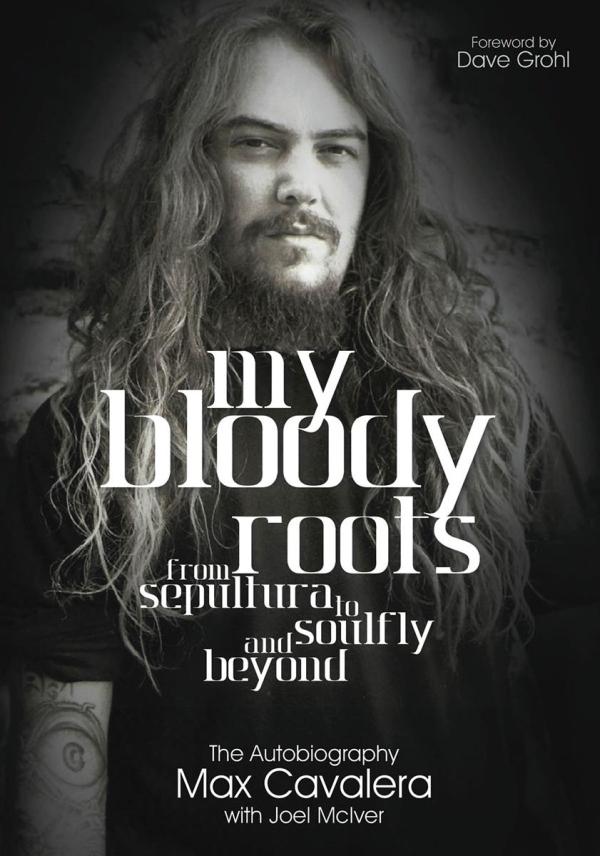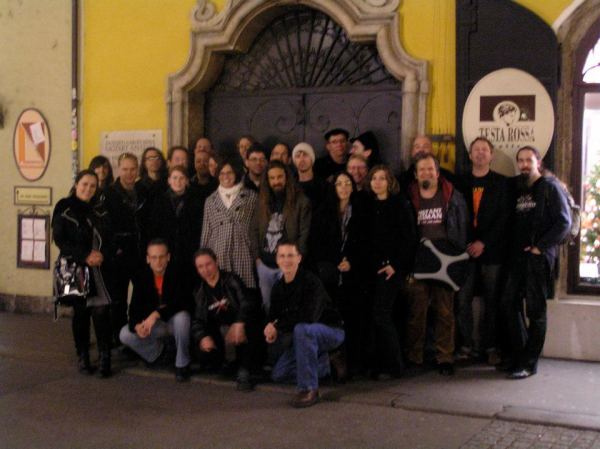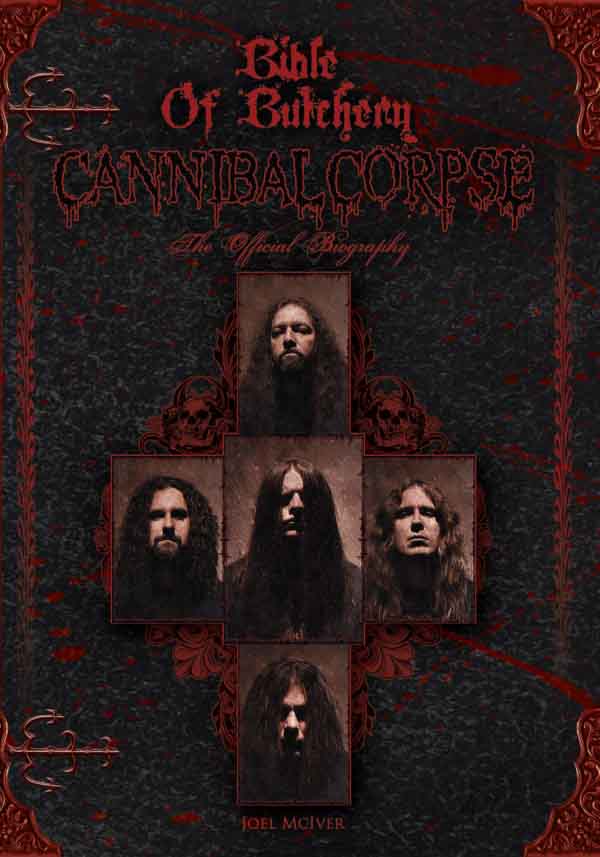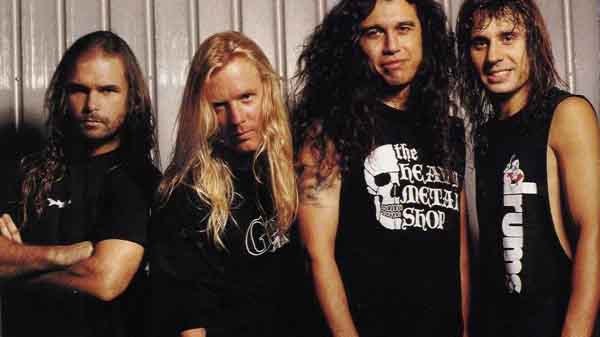Why do most people lead lives of quiet desperation, obeying all that they must do, and then choose boring and pointless music on top of it? Nonsense music flatters the ego and requires nothing of the listener. No person of any quality lives that way, so it’s time to force people upward and not outward, with the sweet tears of poseurs, hipsters, scenesters and tryhards occasioned by these Sadistic Metal Reviews…
Moonblood – Blut and Krieg
When black metal died in 1994, it did so by losing sight of its direction. In art, direction takes the form of something which can be communicated only through metaphor, an idea in formation. In part, black metal had given its ideas to the world and was sitting back to watch them spread, but in another sense, the message — a copy of a copy of a copy at that point — simply got lost as bands imitated the form without the substance of those that inspired them. The Moonblood review exists in the last sentence, since this album represents all that is odious in music: an imitation of the surface configuration and emotional tropes of a genre not only while not understanding what the genre and its founders valued, but without even trying to make coherence out of the noise. Most people like this for the vocals which are like a hybrid between Varathron and old Mayhem, and maybe they enjoy the winding minor key riffs, but the fact remains that these songs go nowhere. They set up a sensation, loop through it, and then end with a convenient exit like a hipster suddenly realizing the people at his party not only do not eat quinoa exclusively, but cannot pronounce “artisanal.” Lack of direction is fortunate for Moonblood since these songs wander when attempting to extend themselves because they have no center and no purpose. It is not surprising that shoegaze took over from this weakened form of black metal because this is directionless atmosphere that apes the past but approaches none of its value or even ability to communicate. In comparison, this is incoherent posing.
Vital Remains – Horrors of Hell
If you see this in a sale or cut-out rack, you will perhaps feel it unjust. But compilations of demos tend to show a learning process, which means they start with the early attempts the band would rather forget (which is why bands tend to put boring covers on demo comps) and slowly work their way up to the ability level and hence material that you are accustomed to hearing. The demo that most are buying this for is “Reduced to Ashes” from 1989 which is the foundation of Vital Remains as a death metal band. This six-song offering shows the nascent death metal genre still emerging from a hybrid of speed metal (Metallica), thrash (DRI) and varied standout influences like Slayer, Sodom and early grindcore. In particular, large parts of this demo sound like they were heavily influenced by Repulsion, from riff style to the tendency to bring songs to a quick peak and then break away to a recapitulation that restates the main theme in coming and going perspectives. Vocals sound like the grim rant of Repulsion with all of its rhythmic power inherited from thrash, rather than the chant of speed metal or the full death metal growl. Riffs could fit on a Possessed or Dark Angel album, generally avoiding the muted down-strum of speed metal but not fully into constant tremolo of death metal, choosing some of the recursive open strumming of heavy metal. Rhythmically however this band does not fit into death metal. As in the first Possessed album, the drummer stays within the speed metal idea of aiming for concrete resolution at the end of each phrase, instead of recognizing that post-Discharge drums follow the guitar and thus must keep a continuous phrase. Although the band clearly knew more music than many of their contemporaries, it’s a stretch to call this “death metal.”
Bloodhunter – Bloodhunter
Imagine the melodic style of At the Gates Slaughter of the Soul that did not attempt to hide its roots in heavy metal and some speed metal, instead of death metal. Bloodhunter has the same strident emo death vocals that At the Gates and The Haunted put to good use, but the underlying music comes from the melodic heavy metal camp with some of the technique of speed metal filtered through power metal. This means for the most part that songs follow the intro-verse-chorus format but that the band will double riffs with a melodic guitar attack and break songs for lengthy solos or other classic heav metal tropes. As a result, this album flows easily and abandons much of the pretense of profundity that flows from the more metalcore offerings, preferring instead to be heavy metal with a few observations of life and a triumphant attitude. Nothing here will surprise the experienced heavy metal listener but most will appreciate its competent musicality and ear for songs that are enjoyable to listen to as well as hard-hitting within the range that this style can achieve. Riff diversity is high, spanning a wide range of tempi and styles including NWOBHM, all updated with the newer approach to rhythm that emphasizes constant forward motion in the speed metal style. Where this band falls down is in trying to distinguish itself with whispered vocals and (excruciating cliche of cliches) a sampled intro from a Tarantino movie. Bloodhunter does best when it sticks to its strengths. This album will not be varied enough internally for death metal fans but should delight power metal and classic heavy metal appreciators.
Sargeist – Satanic Black Devotion
Experienced reviewers wince at tryhard titles like “Satanic Black Devotion” because they indicate advertising, not a coherent statement from the band. Satanic Black Devotion might as well be a can of pureed, processed, sugar and salt added, preservative enhanced black metalTM. Imitating the style of later Gorgoroth and droning melodic black metal like Ancient or Marduk but with the chaotic approach of the first Krieg album, Sargeist is long on vocals and short on song construction. They hit on a few good riffs here and there and deliver those like Christmas presents, then repeat them ad nauseam. Most riffs show a tendency to cycle between symmetrical extremes and so fall into the same boring tropes as later hardcore did. Plenty of sawing guitar adorns this album as do riff patterns from past black metal albums but these are arranged in pleasant repeating rings that do not develop in any particular direction, leading to the listener’s brain grasping a bunch of droning minimalist guitar with an occasional melodic hook. Songs express nothing other than participation, and the inclusion of local band B- riffs alongside more developed ones leads the reviewer to wonder if the band has cribbed its best moments. Several patterns are note-removed from essential parts of Gorgoroth songs, but without the strong buildup, the Christmas riff drops in as a sudden variation and not a culmination or enhancement. This album does better than most because the band keeps the energy high and is smart enough to use the same song structure again and again to present its few powerful riffs, but the result of this randomness is more of what black metal wanted to escape, not create.
Watain – Lawless Darkness
Pretense is the fundamental state of humankind. As apes with linguistic brains, we rage against our impotence and insignificance and come up with poses: “I am important because I am good, smart, rich, sexy, hip, unique, different, wise, etc.” For some, the pretense is more or less accurate. These we call arrogant instead of pretentious. For others, in fact for over 99.98% of humanity, the pretense is merely self-important vaingloriousness backed up by nothing other than some hipster friends, a few possessions, or maybe a claim to fame like having punched out a local celebrity. Watain launched themselves with Rabid Death’s Curse, a pop black metal album in the style of The Other Side from The Abyss which won fans for its simple direct melodic songs. Several albums later, it becomes clear these guys do better giving interviews on metal theory (where they exceed almost all others) than writing music. Lawless Darkness resembles the kids show at the circus where as soon as one act fades another takes its place in relatively random order with the goal being to distract the audience so they eat up more of that popcorn and cotton candy. The album opens with dramatic violin, but then drops into disorganized metal music where riffs are joined through energetic flourishes of drum and Pantera-style bounce riffs. These songs make “sense” in that they follow a basic rhythm but most of what is written here is closer to the technical speed/death riffing of Behemoth than black metal, and none of it serves to build an atmosphere other than constant distraction. It is in fact comically random and empty of message. Presumably the ringmaster coems out and doffs his top hat and juggles live frogs somewhere in here to keep our attention but the music utterly fails to do so.
The Cult of Light – The Cult of Light
Crafted in the style of Meshuggah rather than the metalcore it partially inspired, The Cult of Light creates rhythmic speed metal — similar to Prong, Exodus, Pantera and various proto-prog bands like Anacrusis and Supuration — which installs a jazzy bounce into the speed metal cadence. This approach creates problems in that it makes it difficult to pace together multiple riffs in the speed metal style because the rhythms either conflict or resemble each other too much to distinguish the riffs. On this album, the band chooses instead to have only two major riffs per song but numerous transitions/intros and budget riffs to distract, as if installing turnarounds at each segment of the song before restoring the normal loop order. Vocals are the post-At the Gates rant which aims to complete before the beat and then hold an open-throat growl like a ringing note. Underneath this album lies a heavy metal work pointed toward the art-rock sensibilities that graced the far edge of off-mainstream rock in the 1990s, which means that despite the monotonic growl vocals the aim here is ultimately to set up a dense harmonic space which serves as the hook of the song and provides a space for contrast by other instruments. Unlike most heavy metal bands, The Cult of Light prefer keyboards and what can only be described as aggro-mood-jazz leads which use repeated patterns to serve in more of a lead rhythm guitar role than pure lead. The band builds its songs in layers in order to create spaces for effect, then introduces dramatic changes led by vocals, resulting in a sense of a radio play unfolding before our ears. While this style seems overdone, even on this composition where the need to keep the rigorous bounce and “different” riff styles contorts song structures in several cases, the underlying gentle arty heavy metal is worth appreciating. At the moment of that realization however one begins to wonder why bother with the adornments of style at all, since there is a shortage of arty heavy metal and an audience waiting for it.
Necros Christos – Nine Graves
Southern fried, bluesy rock/metal hybrid with swinging beats and hookish choruses, the new Down album — oh wait, this is Necros Christos. How did this make it into the underground black metal pile? It has deathy vocals but everything else is a slightly sped up version of Pantera but with more dimestore Satanic cult chanting vocals. Some of the chants come straight out of NWOBHM and many of the melodic riffs resemble those from the technical metal period that lumped itself on top of speed metal, calling to mind Anacrusis or DBC. Songs hold up well but basically express nothing but a vague gesture toward a certain type of experience while drinking beer and feeling sleazy somewhere lost in the modern morass. This could easily be a Ratt side project. Musically competent, it nonetheless expresses no greater mood than confusion and a certain type of teenage grimness which could be summarized as “my French fries are cold, and I suffer for it.” The chanting vocals add a certain unreality to the whole thing but evoke more of a sense of Marilyn Manson trying to rile up the apathetic, bored and directionless than the summoning of evil forces. When the band does force radical change in song dynamics or structure it seems more of a transition to a different seat in the same room than a change in how life or the song is viewed. Doubtless reviewers praise this as a fusion of stoner doom and black metal, but what really emerges here is a careful camouflaging of the same old stuff as the latest evil thing, and the real victims here are those who had to listen to this without getting it for free. Ignore trends, focus on structure and meaning in music. Learn from what Necros Christos has failed to apprehend.
Yob – Clearing the Path to Ascend
Someone made Trouble Psalm 9 for idiots, wrapping it up in the 1960s stylings that shows our commercial overlords that we, too, follow the one true path to the light. Because stupidity loves pretense, it contains Cynic-style statements about opening your mind and being a hip groovy 23 skiddoo cat… hasn’t anyone realized this crap is ancient? Other than the periodic death vocals and louder production, this stuff comes to us right from the hippie era. Musically it is not terrible but not terribly interesting either, since it essentially repeats tropes in circularity until ready for a linear withdrawal to equilibrium. The whining vocalist sounds like he is trying too hard to be pacifistic and profound under his patchouli and denim and the riffs fit more in line with jam bands of the 19670s than a heavy metal band. Yob count on the listener being lulled to sleep by the pace and the hypnotically boring vocals so that the person listening forgets what has happened and every riff is new like it fell right out of the sky and exploded. Instead riffs just kind of plod along, barely related to each other, in what might be filler songs on a Bruce Springsteen album if they sped them up and got rid of the posturing. This really has nothing to do with metal but it tries hard to fit in like a bear lost in the coatcheck room. Its pacing and wailing call to mind the albums from Confessor more than the Trouble works, but aesthetically it resembles the early heavy metal doom metal bands like Trouble, Pentagram, and Candlemass but made safe by turning them into warmed-over TV dinner hippie rock. Not surprisingly the music industry gave this a big thumbs up in a nod to the Baby Boomers.
23 CommentsTags: bloodhunter, moonblood, necros christos, sadistic metal reviews, sargeist, the cult of light, vital remains, watain, yob

